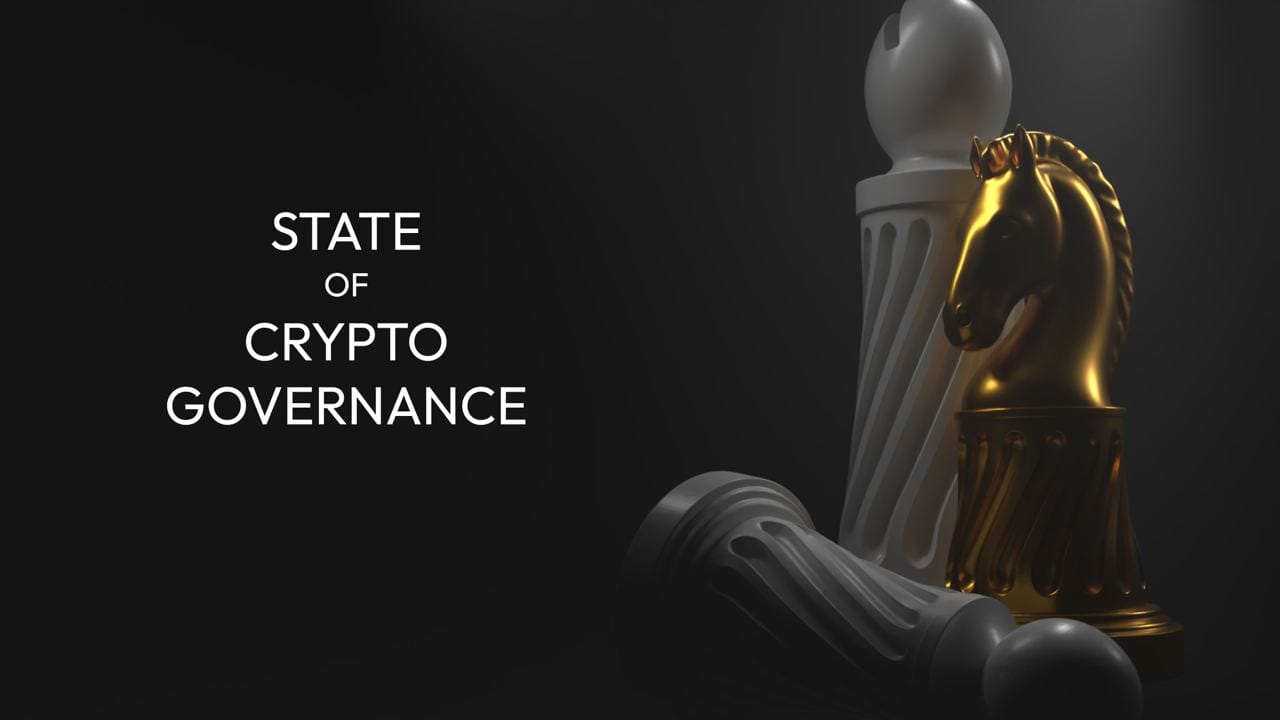State of Crypto Governance: Part I - Introduction to Blockchain Governance

Governance, once the province of political theorists and statesmen, is now a fundamental aspect of the digital landscapes we navigate.
Traditionally, Governance is a term often used to describe how decisions are made and policies are implemented in various settings, though its precise definition often varies depending on context.
According to the United Nations, governance involves all the processes through which political and administrative bodies manage a nation’s affairs. The International Monetary Fund defines it more broadly, including the management of economic, policy, and legal aspects of a nation.
Good governance emerged as a key concept in the 1990s when the World Bank highlighted its importance in development. It refers to the effective use of power and resources to foster development, minimize corruption, and address the needs of the community, including those of minorities and marginalized groups.
The United Nations Economic and Social Commission for Asia and the Pacific identifies eight principles of good governance:
- Participation: Allowing everyone to express their opinions and participate in decision-making.
- Rule of Law: Ensuring laws are applied fairly and protect human rights.
- Transparency: Making processes open and information accessible to those affected.
- Responsiveness: Meeting the needs of all stakeholders promptly.
- Consensus-Oriented: Making decisions that reflect a general agreement and are fair to all.
- Equity and Inclusiveness: Ensuring everyone has opportunities to improve their well-being.
- Effectiveness and Efficiency: Making decisions and using resources that achieve desired outcomes.
- Accountability: Holding all decision-makers responsible to the public and stakeholders.
These principles aim to benefit the stakeholders involved.
Governance in Blockchain
While this is the basic understanding of what governance is, it is more widely referred to as decision-making activities and processes, both formal and informal, carried out by organizations, corporations, and societies.
In traditional systems, governance is typically managed by centralized authorities. However, in the decentralized world, these traditional principles are tested and redefined within the context of decentralized decision-making where no single authority has control. These systems challenge conventional governance by dispersing power and control in a way that traditional systems do not.
However due to the decentralized nature of these infrastructures, they face unique challenges. As Primavera De Filippi, the Blockchain author describes it:
Decentralized networks face unique governance challenges as they scale; not just technical, but social, financial, and regulatory hurdles.
As we delve into the "State of Crypto Governance," this report will explore the Specifics of Blockchain governance and how various Layer 1 blockchain have implemented decentralized governance, highlight the unique challenges they face, and provide a comparative analysis of their effectiveness.
In the first part of this comprehensive report, we’ll understand the basics of Decentralized decision-making in Blockchain. So without further ado let’s get started.
Blockchain governance systems can be classified into various models, each with its features, benefits, and limitations. Understanding these different governance structures is crucial for analyzing the long-term stability, adaptability, and success of blockchain projects.
Let’s get started by exploring what is Decentralized Decision Making.
Decentralized Decision-Making in Blockchain Governance
Blockchain infrastructure governance is essential for the sustainability, flexibility, and integrity of blockchain networks. These governance systems set the rules and procedures that shape the development and functioning of these infrastructures. They not only guide development goals and align on-chain incentives but also play a significant role in defining the community's culture, reflecting values such as decentralization, privacy, and technical excellence.
The primary function of governance systems is to determine how protocol changes, such as upgrades or new features, are made and implemented. As technology advances, networks must adapt; effective governance ensures these changes are integrated smoothly and with minimal disruption.
Governance Mechanisms in Blockchain
Blockchain governance incorporates two major mechanisms to manage its decentralized nature. These include:
On-Chain Governance: Proposals for changes are made directly on the blockchain, where token holders vote to approve or reject changes. This method is highly transparent but can concentrate power among large token holders.
Off-Chain Governance: Involves discussions and decision-making processes that occur outside of the blockchain, often in forums or through community meetings. This method can allow for more nuanced discussions but may lead to the centralization of power among influential community members.
Challenges and Innovations
Decentralized networks face the challenge of coordinating complex decision-making without a central authority while preventing gridlock or division among stakeholders. Innovations such as delegated voting and algorithmic decision models are emerging to address these challenges, aiming to balance efficiency with broad participatory governance.
The Role of Smart Contracts in Governance
Smart contracts play a pivotal role in automating governance processes on blockchain networks. They can enforce the outcomes of votes automatically, ensuring that decisions made through the governance process are implemented swiftly and without manual intervention.
Conclusion
As we explore the foundation of blockchain governance, it becomes clear that the intersection of technology and traditional governance presents both challenges and opportunities. The decentralized decision-making process inherent to blockchain not only tests the existing governance frameworks but also presents an enhanced framework that influences the decision-making process in the digital realm.
In the next part of our series, we’ll delve into the necessary components being used to implement governance in blockchain protocols. We’ll further examine how these components shape decision-making in decentralized setups.

